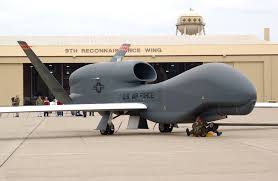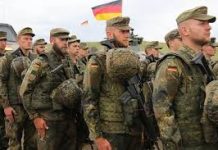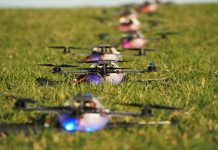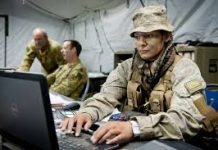
Since 1945 the U.S. Army has been structured primarily to defend Europe. Although it has been diverted into counterinsurgency campaigns in Southeast Asia and the Middle East, its backbone remains large, heavy mechanized brigades.
But strategic priorities are shifting. The Obama administration pivoted U.S. strategy toward Asia, and the Trump administration has emphasized homeland defense, the Western Hemisphere and the Pacific. That raises a practical question: what do you do with an Army built for a Europe-centric mission when Europe is no longer the central focus?
One American analyst says the solution is drones. Rather than keeping large, permanent formations overseas, the U.S. could field expeditionary drone units—either based in Europe or sent where needed—as a cost-effective alternative to heavy garrisons.
“Forward-deployed large garrisons and infantry- and armor-focused rotational forces should give way to mixed drone units that deploy faster and better amplify partner combat power,” wrote Benjamin Jensen, director of the Futures Lab at CSIS, in a recent analysis.
Jensen imagines European NATO members maintaining traditional combat arms—tanks and infantry fighting vehicles—while U.S. drone units supply strike, reconnaissance and electronic-warfare unmanned aerial capabilities in support.
“Picture a 250-person rotational battalion instead of a 1,000-person one, equipped with hundreds of FPV drones and octocopters,” Jensen told Defense News. “They’d operate alongside European partners, flow in, complete missions, and flow out quickly.”
The idea that drones can substitute for boots on the ground is controversial but not new. Jensen frames it as “substitution,” borrowing an economic concept: one product can replace another if it delivers similar value more cheaply. Like shoppers swapping brands on sale, some ground platforms could be replaced by drones when they provide comparable capability at lower cost.
Flexible, mobile drone formations, Jensen argues, would create options for supporting U.S. interests in Europe. He has previously proposed dedicated drone brigades; for instance, an Army Launched Effects battalion equipped with strike, surveillance and electronic-warfare drones could patrol broad areas and deploy swarms to blunt a Russian assault.
Substitution also affects drone design. If platforms can be quickly reconfigured with different payloads—intelligence sensors, EW gear, or strike munitions—then a single drone can perform many roles and reduce the need for highly specialized airframes.
The Army’s Transformation Initiative is already pushing toward rapid development and fielding of small drones, but Jensen warns against retiring medium-altitude, long-endurance (MALE) systems like the MQ-1C Gray Eagle. Critics say MALE platforms are costly and vulnerable—Turkey-made TB-2 Bayraktars suffered heavy losses to Russian air defenses in Ukraine, and the U.S. lost several MQ-9 Reapers to Houthi fire over Yemen earlier this year—but Jensen stresses their unique range and payload capabilities.
“I want a platform with enough power and payload to cover an area for 24 hours and carry multiple Hellfires if necessary,” he said.
Jensen also notes that reserves matter: the Army Reserve and National Guard could form new drone units, and existing Army aviation elements marked for elimination could be converted into unmanned formations. That approach would cut costs while allowing rapid mobilization of combat power. When asked how NATO might react to a U.S. shift from ground units to drone support, Jensen replied, “Something is better than nothing.”
Adopting expeditionary, drone-centric forces would reshape deterrence. Rather than relying on permanently stationed Armored Brigade Combat Teams in places like Poland, the U.S. could send mobile drone brigades to Eastern Europe during crises to signal support for NATO. Drone formations would also suit the Pacific, where vast distances favor light, transportable units.
“You can field far more versatile payloads and gain operational flexibility than by sticking to a 20th-century deterrence model,” said Jensen.




